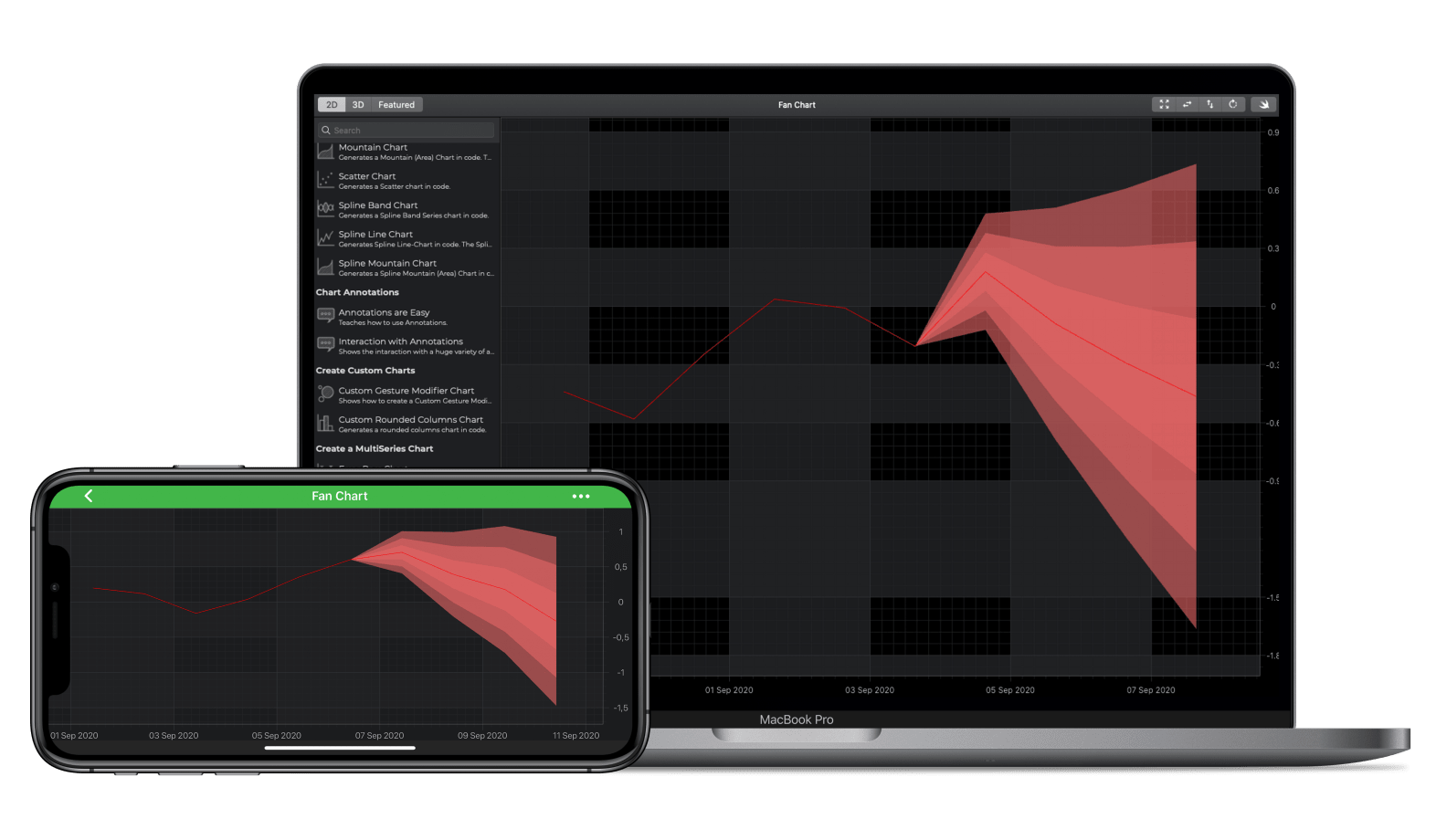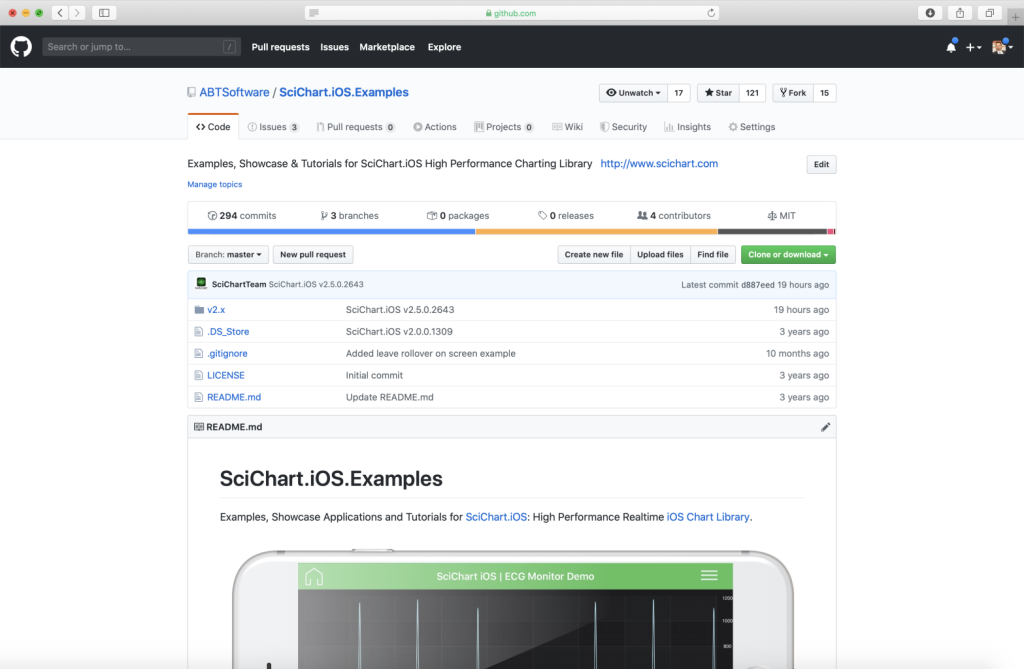iOS & macOS charts - Examples
Please note! These examples are new to SciChart iOS v4 release! SciChart’s OpenGL ES and Metal iOS and Metal macOS Chart library ships with hundred of Objective-C and Swift iOS & macOS Chart Examples which you can browse, play with and view the source-code. All of this is possible with the new and improved SciChart iOS Examples Suite and demo application for Mac, which ships as part of the SciChart SDK.
Demonstrates how to use multiple SCIFastBandRenderableSeries to create an iOS Fan Chart. In this example, we overlay several Band-Series with varying opacity to create a Fan-chart effect. See Documentation on how to use this type here: The iOS Band Chart Documentation.
A Fan Chart may be used to visualize statistical uncertainty, such as forecasts or margins of error in a known timeseries.
The SCIFastBandRenderableSeries requires an ISCIXyyDataSeries , which has X,Y0,Y1 points, to display a solid band between high and low Y-value.
The Swift and Objective-C source code for the iOS and macOS Fan Chart example is included below (Scroll down!).
Did you know that we have the source code for all our example available for free on Github?
Clone the SciChart.iOS.Examples from Github.
Also the SciChart iOS and Scichart macOS Trials contain the full source for the examples (link below).


